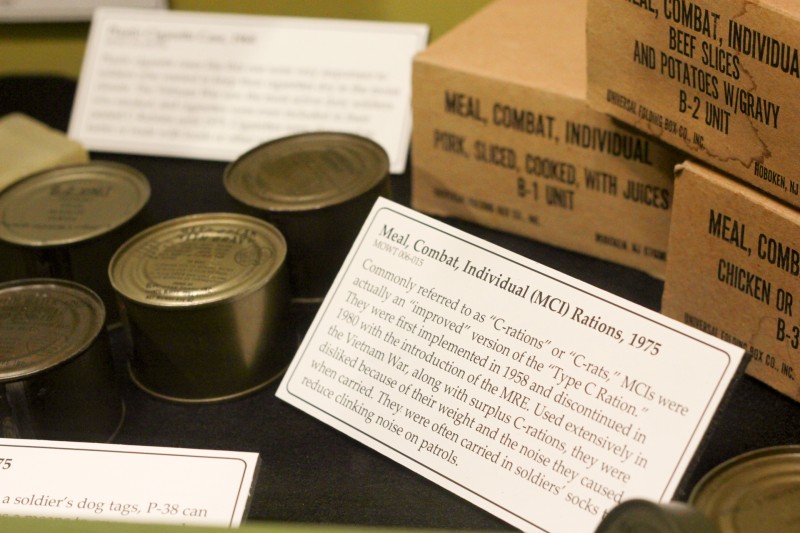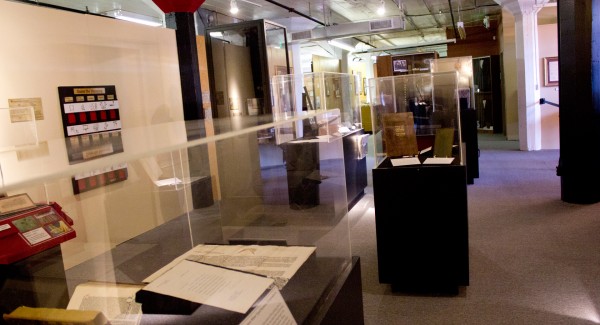Many college students experience some sort of internship. However, not all students get the opportunity to curate their own museum exhibit.
Senior Emily Simon became the first Newman student to receive this opportunity at the Museum of World Treasures in Wichita. Her exhibit “Transcribing History” opened Feb. 26 in the Rotating Gallery and will be on exhibit until January 2016.
“It’s about the history of writing,” Simon said. “I kind of based it on the artifacts that we had and what I really wanted to do it about. I divided it up into three sections: the history of written languages themselves, the history of writing utensils, and the power of words themselves.”
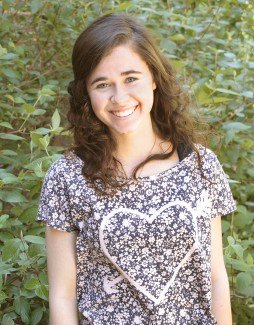
Simon said she learned of the internship through Professor of History and Director of International Studies Cheryl Golden, Ph.D., who is also a member of the museum board. Simon is an English and history double major with a minor in international studies. She plans to apply to the Fulbright Program and graduate school after graduating from Newman.
Getting the whole experience
According to the museum’s Curator of Exhibits and Research Tim Howard, student curators help oversee every aspect of the exhibit: choosing a topic, researching, writing labels, design and layout. The experience is aimed at giving the student a feel for how much work goes into curating an exhibit.
“It’s important for the students because it gives them the opportunity to see what museum work as a curator would be like,” Howard said. “It’s important to the collections because it gives us a chance to show things that have not ever been on exhibit. So, it gives the public a chance to see new things, as well as gives us a chance to re-research these artifacts and maybe find out new things about them and interpret them in a different direction.”
Simon said she enjoyed the process from start to finish. She spent the first couple of weeks looking through artifacts and deciding what she was interested in researching more.
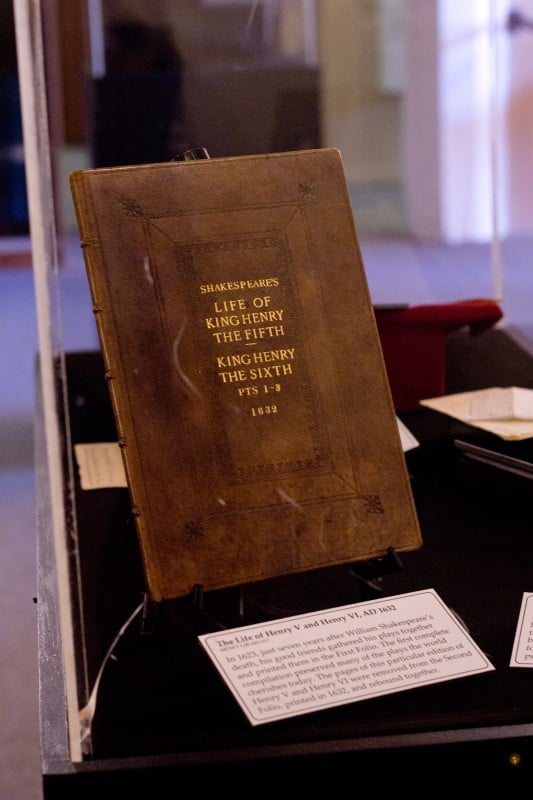
“The great thing about The Museum of World Treasures is that we have a ton of stuff that comes from all over,” she said. “As an English major, writing is something that I’m very interested in and it just kind of seemed like the best fit, most obvious thing for me to do. I had a couple of artifacts that grabbed my attention immediately and really pushed me in that direction, like an old copy of Edgar Allan Poe’s ‘The Raven’ (1846) and a copy of Shakespeare’s ‘Life of King Henry V and King Henry VI’ (1632).”
She said she hopes that her exhibit helps people realize how much written language and other means of communication have changed over time.
“I guess one of the biggest themes is I wanted people to know that the same ideas and concepts that are pushing technology forward today are the same things that pushed technology forward, maybe at a slower pace, in ancient times. One of the first things I have in my exhibit is a Cuneiform tablet compared to an iPhone. These are essentially the same things. People had the same desires when they created them, [there are] just different results.
A feeling like nothing else
Simon said that, when opening the exhibit, she didn’t expect to feel the way she felt until later in life.
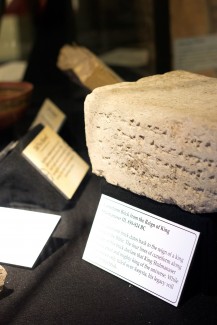
“I really felt like an adult for the first time,” she said. “I got to cut a ribbon and everything. It was very exciting. It was a very big accomplishment, like most things when you put a lot of work into them even though it’s tiring and it’s a lot of research and planning. [But[ When you see it all work out and done, it’s definitely a very exciting, happy feeling.”
This isn’t the first big opportunity Simon has received. She had the opportunity to study abroad in Japan last summer, and recently was able to attend a games conference after taking a games course from Associate Professor of History Kelly McFall, Ph.D.
“I have fantastic advisors that know exactly what I want to do and who are looking for opportunities for me,” she said. “A lot of my teachers, in addition to museum staff, helped contribute to the success of the exhibit whether they know it or not. I think that’s very characteristic of Newman. It’s a small school, but that’s one of the best qualities [because] they’re able to focus on you individually and help you get where you need to be.”
A relationship with history
Simon isn’t the only Newman student with a strong tie to the museum. Newman alumna Rachel Stanley is currently the museum’s marketing and development director, while alumna Kristin Martin is the education director and volunteer coordinator.
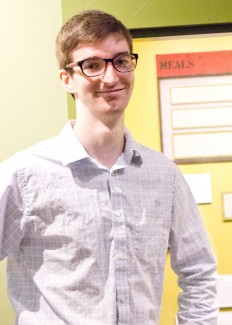
Current Newman student John Denny has spent his summer interning at the museum as well. He has been helping with aspects of research, writing, editing, and label design for some spaces in the museum, specifically the new Vietnam exhibit. He said he spent his first couple weeks doing a lot of research.
“It’s been really interesting,” he said. “I didn’t know what to expect and I’m an English major, so I’m not exactly a history buff. I felt like a detective that first couple of weeks. I got to go in and see all the artifacts back in the curatorial, which was like a little behind-the-scenes. I hadn’t been to this museum very much and I got an in-depth look at it and it was really cool. Now that the exhibit’s done, it feels really good to be part of creating an exhibit for the museum.”
Howard said he’s had great experiences with Newman students across the board.
“It’s been extremely great – not just John and Emily – who seem to be extremely motivated, engaged and who take ownership,” Howard said. “But all of the results we’ve had have been extremely positive. We’ve also worked with Cheryl Golden’s Introduction to Historical Methods class. They did some great research on our pots and found out things we didn’t know about them. So overall, the interaction with Newman has been tremendously beneficial and fun for us, and hopefully for the students as well.”
Howard said the student curator position opens every fall, and students who are interested should contact him at [email protected]. To see a video of Simon’s ribbon-cutting ceremony, click here.
